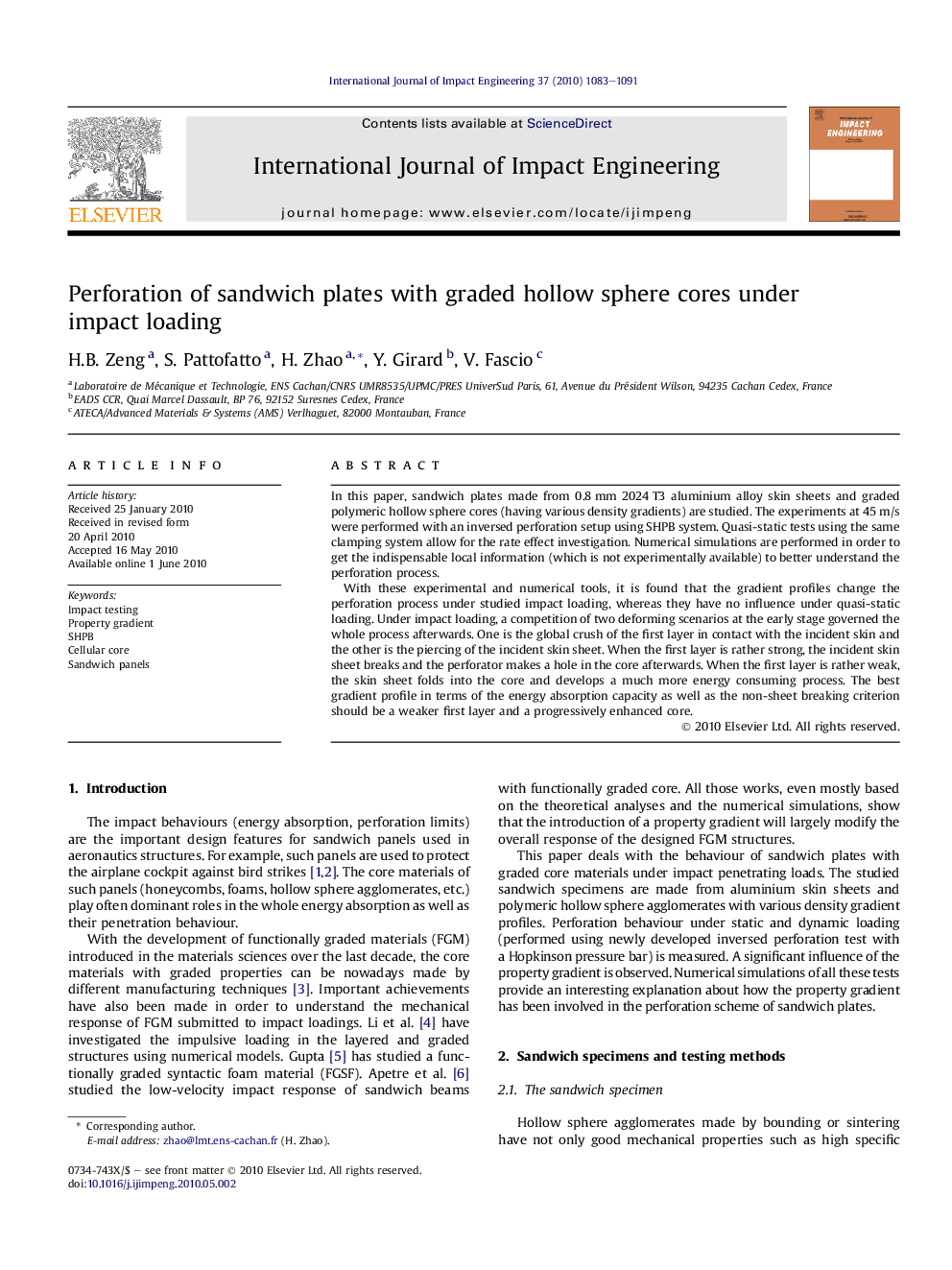| Article ID | Journal | Published Year | Pages | File Type |
|---|---|---|---|---|
| 783176 | International Journal of Impact Engineering | 2010 | 9 Pages |
In this paper, sandwich plates made from 0.8 mm 2024 T3 aluminium alloy skin sheets and graded polymeric hollow sphere cores (having various density gradients) are studied. The experiments at 45 m/s were performed with an inversed perforation setup using SHPB system. Quasi-static tests using the same clamping system allow for the rate effect investigation. Numerical simulations are performed in order to get the indispensable local information (which is not experimentally available) to better understand the perforation process.With these experimental and numerical tools, it is found that the gradient profiles change the perforation process under studied impact loading, whereas they have no influence under quasi-static loading. Under impact loading, a competition of two deforming scenarios at the early stage governed the whole process afterwards. One is the global crush of the first layer in contact with the incident skin and the other is the piercing of the incident skin sheet. When the first layer is rather strong, the incident skin sheet breaks and the perforator makes a hole in the core afterwards. When the first layer is rather weak, the skin sheet folds into the core and develops a much more energy consuming process. The best gradient profile in terms of the energy absorption capacity as well as the non-sheet breaking criterion should be a weaker first layer and a progressively enhanced core.
